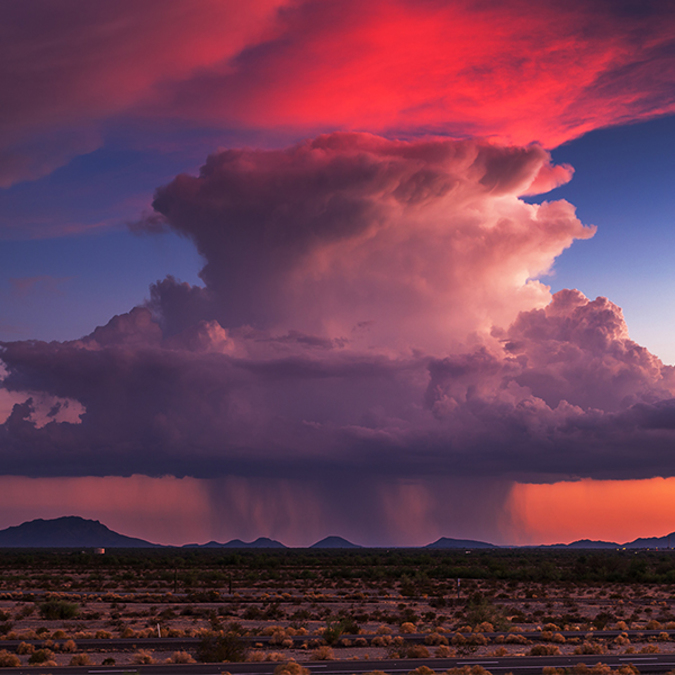Monsoon season is here! Well-maintained stormwater systems are essential to minimize flooding, maintain access to homes and businesses, minimizing traffic delays, and return clean runoff from urban areas to the natural environment. The City of Phoenix owns most of the storm drain infrastructure and associated streets; however, some are privately owned, whether by a home owner’s association, or an industrial or commercial complex.
Here are four ways you can be an advocate this monsoon season!
Know who to contact
Knowing who is responsible for maintaining a particular drainageway could save time and money. If there is an issue, such as, a blocked catch basin, a downed tree, water ponding on the corner – rapid response to remove the debris, or clog, will depend on whether you contact the correct individual, company, or organization.
Maintain a list of contacts. If you live in a private community, your property management company or homeowner's association is likely to be responsible for maintenance of the drainage areas around your home. For public property, you can contact your local municipality. In the City of Phoenix, you can contact www.phoenix.gov/atyourservice or the Street Transportation Department Dispatch at 602.262.6284
Of course, for emergencies, a downed powerline, or rising floodwater, dial 911. If you see someone dump anything into a storm drain in Phoenix, call the Stormwater Hotline at 602-256-3190 or contact your local municipality.
Keep pollutants off the ground
The solution to pollution is… not dilution. It’s prevention. Spent containers of chemicals, piles of dirt or mulch, and collections of rusty car parts can contaminate the environment if they are exposed to rainfall or runoff. Pet waste left on the ground, or even in your backyard, oil drips from your car, and over-applied fertilizer or pesticide are all sources of pollution. Bacteria, oil, chemicals, and even dirt are environmental contaminants. These are costly to remove from stormwater at the end of the line. If they reach surface waters, impacts to fish, birds, and recreationalists can be expected.
Pick up waste, dispose of it properly. Clean up leaks and spills, or better yet, perform routine maintenance on equipment to prevent leaks and replace parts or equipment before they break, or fail. Never pour oil on the ground for dust control; always recycle it!
Watch the flow
Where does it go? Does it collect on your lawn? How does it get to the street? Does it pick up pollutants along the way? After that, where is it flowing? To a nearby park? A natural wash? Does it make it to a river?
Next time it rains, watch. Which path does it take? Does it look clean? Is there a sheen? Is there a puddle or pond that takes more than two days to evaporate or infiltrate? If so, take note. Snap a picture. Report it.
Report back
The monsoon can be unpredictable. Not every property can be stabilized and protected against every storm. But it helps to be prepared. Well-maintained infrastructure performs better in a storm. Report problems you identify in your neighborhood, such as clogged catch basins. Capture a photo of the leftover pond that remains a few days after the last downpour. Contact your city if you see someone dumping something into the storm drain.
Everyone can help to protect our community from stormwater damage. Being conscientious in maintaining public and private drainage systems, reducing pollutants, and reporting damaged infrastructure are to key to minimizing impacts to humans and the environment.
Remember –Clean Water Starts with You!



